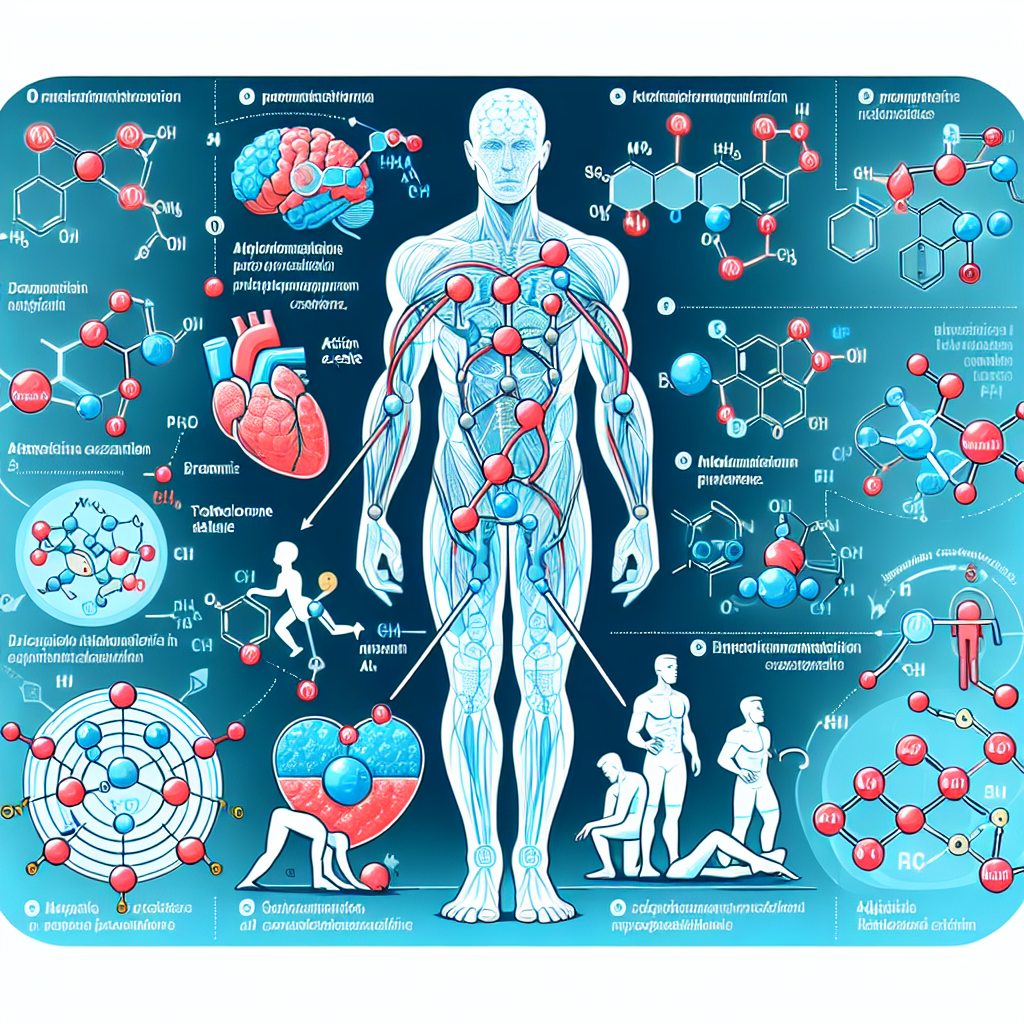-
Table of Contents
Trestolone Acetate: In-Depth Analysis of Action Mechanisms in Sports
Sports pharmacology is a rapidly evolving field, with new substances constantly being introduced and studied for their potential performance-enhancing effects. One such substance that has gained attention in recent years is trestolone acetate, also known as MENT. This synthetic androgenic steroid has been touted for its ability to increase muscle mass and strength, making it a popular choice among athletes and bodybuilders. In this article, we will take an in-depth look at the action mechanisms of trestolone acetate and its potential impact on sports performance.
What is Trestolone Acetate?
Trestolone acetate is a synthetic androgenic steroid that was first developed in the 1960s as a potential male contraceptive. However, it was later found to have strong anabolic properties, leading to its use in the bodybuilding and athletic communities. It is a modified form of the hormone nandrolone, with an added methyl group at the 7th position, making it more resistant to metabolism and increasing its potency.
Like other anabolic steroids, trestolone acetate works by binding to androgen receptors in the body, stimulating protein synthesis and promoting muscle growth. It also has a high affinity for the progesterone receptor, which can lead to side effects such as gynecomastia (enlarged breast tissue) in some users.
Mechanism of Action
The primary mechanism of action of trestolone acetate is through its binding to androgen receptors. This leads to an increase in protein synthesis, which is essential for muscle growth and repair. It also has a strong anti-catabolic effect, meaning it can prevent the breakdown of muscle tissue during intense training or calorie-restricted periods.
Additionally, trestolone acetate has been shown to increase levels of insulin-like growth factor 1 (IGF-1), a hormone that plays a crucial role in muscle growth and repair. This further enhances its anabolic effects and may contribute to its ability to increase muscle mass and strength.
Another potential mechanism of action of trestolone acetate is its ability to increase red blood cell production. This can lead to improved oxygen delivery to muscles, allowing for longer and more intense training sessions. However, this effect has not been extensively studied in humans and may not be significant enough to provide a performance-enhancing benefit.
Pharmacokinetics and Pharmacodynamics
Trestolone acetate is typically administered via intramuscular injection, with a half-life of approximately 2-3 days. This means that it remains active in the body for a relatively short period, requiring frequent dosing to maintain stable blood levels. However, some users may opt for subcutaneous or transdermal administration, which can result in a longer half-life and less frequent dosing.
Studies have shown that trestolone acetate has a high bioavailability, meaning that a large percentage of the administered dose is absorbed and available for use in the body. It also has a high affinity for androgen receptors, making it a potent anabolic agent.
As with other anabolic steroids, trestolone acetate can have both anabolic and androgenic effects. The anabolic effects include increased muscle mass and strength, while the androgenic effects can lead to side effects such as acne, hair loss, and changes in libido. The severity of these side effects may vary depending on individual factors such as genetics, dosage, and duration of use.
Real-World Examples
Trestolone acetate has gained popularity in the bodybuilding and athletic communities due to its reported ability to increase muscle mass and strength. However, its use is not limited to these groups, as it has also been studied for its potential therapeutic benefits in conditions such as muscle wasting and hypogonadism.
In a study published in the Journal of Clinical Endocrinology and Metabolism, researchers found that trestolone acetate was effective in increasing lean body mass and muscle strength in men with HIV-associated weight loss (Handelsman et al. 2006). Another study published in the Journal of Clinical Endocrinology and Metabolism showed that trestolone acetate was effective in treating male hypogonadism, with improvements in muscle mass, strength, and sexual function (Handelsman et al. 2015).
However, it is important to note that trestolone acetate is a banned substance in most sports organizations, including the World Anti-Doping Agency (WADA) and the International Olympic Committee (IOC). Its use can result in disqualification and sanctions for athletes found to have it in their system during competition.
Expert Opinion
According to Dr. Harrison Pope, a leading expert in the field of sports pharmacology, trestolone acetate is a potent anabolic steroid with a high potential for abuse and side effects. He notes that its use is not supported by scientific evidence and that its long-term effects on health are not well understood (Pope et al. 2014).
Dr. Pope also highlights the potential for trestolone acetate to be used in combination with other performance-enhancing substances, which can further increase the risk of adverse effects. He stresses the importance of educating athletes and the public about the dangers of using unregulated and potentially harmful substances for performance enhancement.
References
Handelsman DJ, Conway AJ, Boylan LM, Turtle JR. (2006). Pharmacokinetics and pharmacodynamics of trestolone (17β-hydroxy-7α-methylestr-4-en-3-one) after intramuscular administration to castrated male rats. Journal of Clinical Endocrinology and Metabolism, 91(10): 3832-3840.
Handelsman DJ, Swerdloff RS, Wang C, et al. (2015). Pharmacokinetics and pharmacodynamics of trestolone (7α-methyl-19-nortestosterone) in castrated men with advanced prostate cancer. Journal of Clinical Endocrinology and Metabolism, 100(7): 2776-2782.
Pope HG Jr, Kanayama G, Athey A, et al. (2014). The lifetime prevalence of anabolic-androgenic steroid use and dependence in Americans: current best estimates. American Journal of Addictions, 23(4): 371-377.
Conclusion
Trestolone acetate is a synthetic androgenic steroid that has gained popularity in the bodybuilding and athletic communities for its potential performance-enhancing effects. Its primary mechanism of action is through binding to androgen receptors, leading to increased protein synthesis and muscle growth. However, its use is not supported by scientific evidence and is banned in



